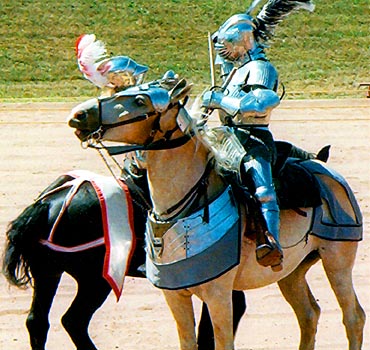
Re-enactors representing armour-plated knights
Photo © S. Alsford
The chain-mail armour commonly worn by elite soldiers in the eleventh century could, if the strike were in the right place, be pierced by arrow, crossbow bolt, or sword or spear thrust. With the growing emphasis on massed cavalry charges as the central battle tactic, warriors sought to reinforce chain-mail with iron plate over those parts of the body where a blow could do most serious damage.
This development progressed towards increasing amounts of interlocking plate armour (with shields diminishing in importance as a result), spurred on by renewed use of massed archers, whose longbows could rapidly loose against an advancing cavalry line arrow after arrow, some of which would find chinks or spots protected only by mail, while certain arrows were capable of piercing even plate at short range.
To fight wearing chain-mail and/or plate armour required long training and well-developed physical strength and endurance, as well as a strong and fast horse (not a cart-horse); such armour and mounts were expensive, particularly when encasing plate armour had to be custom-designed for the wearer. These factors, among others, favoured a predominant military role for the upper class. Surviving suits of armour indicate that knights had the slim build of a horseman, but with broad shoulders and strong arms. Although some pieces of plate armour are occasionally bequeathed in the wills of townsmen, we may doubt whether more than a very few ever possessed a full suit of armour or had the training and physique of a professional fighting knight.
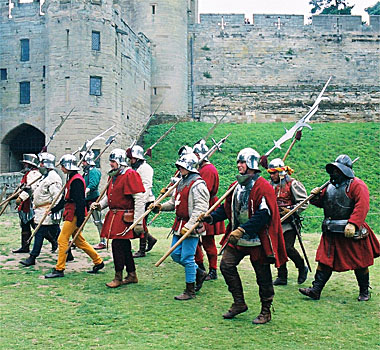
Re-enactors portraying mid-fifteenth century
foot-soldiers, at Warwick castle. Although these troops are
intended to represent part of the retinue of a noble house,
the small but fairly evenly equipped and often uniformed urban
contingents sent to war may have looked something like this.
Photos © S. Alsford
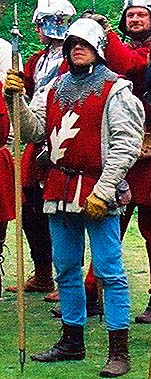
Or like the company below, marching to the field of a re-enactment of
the battle of Tewkesbury (1471).
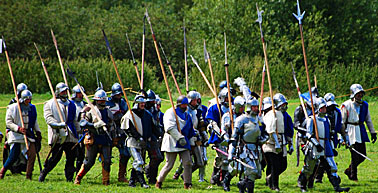
Photo © S. Alsford
Urban militia in the Late Middle Ages were made up of infantry and archers. Those who might be summoned to defend their towns included some men with very little equipment, the Assize of Arms notwithstanding. Contingents sent to answer royal summons were necessarily equipped more according to legal requirements, whether with their own arms and armour, items loaned by other townsmen, or equipment held in storage by local authorities. This would typically include: some kind of defensive polearm (even if no more than staffs, but probably more commonly some kind of pike), since the main role of urban infantry may have been to protect archers against cavalry; an offensive weapon, such as sword, axe, or dagger, to finish off unhorsed foes or for hand-to-hand fighting; soft body-armour (padded or leather jacket), sometimes reinforced with small metal plates to protect the breast; and basic protection for head/neck (such as bascinet or sallet) and hands.
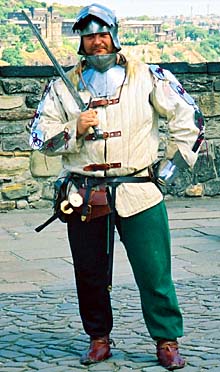
Re-enactor portraying late fourteenth century
foot-soldier, at Edinburgh castle.
Photo © S. Alsford
In 1483 a foreign observer, Dominic Mancini, commented on the sturdiness of English foot-soldiers, which he attributed to their use of plate armour to protect hand and arm, the stoutness of swords and bows, and the use of soft body armour over plate to protect the trunk.